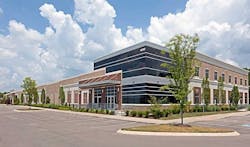‘Signficant Growth Opportunity’ Lies Ahead for Secondary Markets
The competition and constraints in major Internet hubs will continue to drive demand in secondary data center markets, according to panelists in our DCF Data Center Executive Roundtable. Some of this growth will consist of edge computing requirements seeking connections to local users, while other operators seek out regions with more land and power to support a long-term runway for growth.
Our panelists include Ryan Baumann from Kohler Power Systems, Rhea Williams of Oracle and Infrastructure Masons, and TMGCore CEO JD Enright. The conversation is moderated by Rich Miller, the founder and editor of Data Center Frontier. Here’s today’s discussion:
Data Center Frontier: What’s the outlook for data center growth in regional “second tier” markets?
RYAN BAUMANN, Kohler Power Systems
Ryan Baumann: Data is being generated at a staggering pace and the users and creators are moving to markets further from the typical infrastructure of the Internet backbone. As workloads shift to be closer to the growing “edge,” these “second tier” markets will need to grow to accommodate the additional decentralized compute.
Moreover, “first tier” markets will need the ability to push work loads to multiple secondary markets. Depending on the market and how forward-looking the cities are can also be a significant barrier to the growth. It is important that these regional municipalities are creating the right incentives, and that data center clients are partnering with them and the local utilities, early and often. If not properly coordinated, a land parcel may be selected and secured, but electrical power may not either be available at the needed amount or take years to deliver to site. So careful planning is key.
Additionally, it is imperative that we all become brand ambassadors of our industry to help encourage an understanding of what a data center is, why we need to embrace it and how we can sell the need for them in new markets. The labor shortage is impacting all aspects of first- and second-tier markets. We need to engage and expose the next generation of diverse and passionate leaders in all aspects of this business to be our future leaders.
JD ENRIGHT, TMGcore
John-David Enright: With the need for HPC closer to the end user, due to processing speed considerations, I see a significant growth opportunity in these markets. Even tier 3 and 4 markets have room for significant growth in the next decade and beyond.
What are the key issues impacting future growth in these markets? Infrastructure and the corporate willingness to invest in these markets. This includes having the willingness to invest into new technologies like liquid immersion cooling and other innovative and enabling technologies.
RHEA WILLIAMS, Oracle and Infrastructure Masons.
Rhea Williams: The constraints in major regions will continue to drive demand in “second tier” markets. The higher utilization of personal and household devices pushing greater data consumption and creation will drive the need for more coverage from a latency standpoint.
Whether you call it “Second Tier” or the “Edge,” everything points to growth.
NEXT: What are the best options for data centers to operate and grow in power-constrained markets?
Keep pace with the fact-moving world of data centers and cloud computing by following us on Twitter and Facebook, connecting with DCF on LinkedIn, and signing up for our weekly newspaper using the form below:
About the Author






